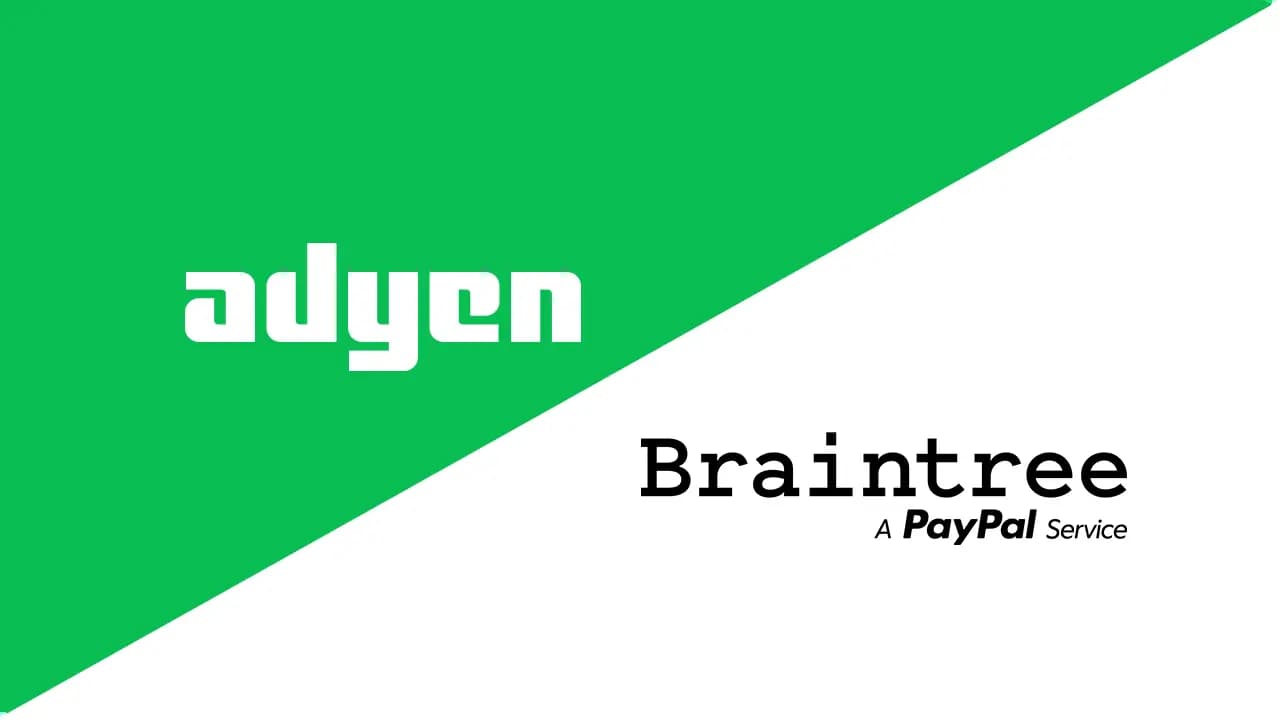
Which Is Best: a Comprehensive Payment Platform or a Cross-Border Specialist?
The payment processing landscape presents businesses with a critical decision: should you choose a comprehensive payment platform designed for all-in-one commerce or a specialized cross-border payment service focused on international business transactions? This fundamental choice shapes everything from your implementation timeline to your global expansion capabilities and cost structure.
Stripe represents the comprehensive platform approach—a complete payment service provider that handles everything from gateway functions to global expansion within a single, developer-friendly ecosystem. With over 1.3 million active websites globally using Stripe and processing $1.4 trillion in annual transaction volume, Stripe has proven its ability to scale with businesses from startup to enterprise level across 46 countries and 135+ currencies.
Payoneer takes the cross-border specialist route, functioning as a global financial services company that facilitates cross-border payments for businesses, professionals, and freelancers worldwide. Founded in 2005 and serving customers in over 190 countries and territories, Payoneer processes payments in over 150 currencies with annual revenue reaching $977.72 million in 2024 and processing $80 billion in annual volume.
The choice between these approaches isn’t just technical—it’s strategic. Do you value the comprehensive features and developer tools of an all-in-one platform, or do you need the specialized cross-border capabilities and marketplace integrations that come from working with international payment specialists? This comparison will examine both platforms in detail to help you determine which approach aligns with your business objectives.
Key Takeaways
- Stripe excels in providing a comprehensive payment platform with extensive developer tools and global commerce features
- Payoneer offers specialized cross-border payment services with strong marketplace integrations and international business focus
- Key differences lie in business models (all-in-one commerce vs. cross-border specialist), target markets, and fee structures
- The choice depends on whether you prioritize comprehensive payment features or specialized international business capabilities
Cross-Border Payment Platform Overview
Cross-border payment platforms are specialized financial services that facilitate international transactions between businesses, freelancers, and marketplaces across different countries and currencies. Unlike traditional payment processors that focus primarily on domestic transactions, cross-border platforms are designed to handle the complexities of international commerce, including currency conversion, regulatory compliance across multiple jurisdictions, and integration with global marketplaces.
These platforms address the unique challenges of international business, such as receiving payments from clients in different countries, managing multiple currencies, working with international marketplaces, like Amazon or Upwork, and navigating varying regulatory requirements. With global trade continuing to expand and businesses increasingly operating internationally, cross-border payment solutions have become essential infrastructure for modern commerce.
The distinction between traditional payment platforms and cross-border specialists lies in their focus: traditional platforms excel at comprehensive payment features and developer tools, while cross-border specialists optimize for international transaction efficiency, marketplace integrations, and global business operations.
Stripe
Stripe has established itself as the leading payment platform for internet businesses, transforming how companies integrate payment functionality into their digital products. Rather than managing multiple payment relationships, businesses can access a complete payment ecosystem through a single integration.
What Is Stripe?
Stripe revolutionized online payments by making complex payment infrastructure accessible through simple APIs and comprehensive business tools. Founded in 2010 by brothers John and Patrick Collison, the company has grown to serve millions of businesses worldwide. As of 2024, 80% of the largest software companies in the United States used Stripe, demonstrating its dominance in the tech-forward business segment.
How Does Stripe Work?
Stripe operates as a complete payment ecosystem that handles every aspect of the payment flow. When customers make purchases, Stripe securely captures payment information, performs real-time fraud analysis using machine learning, and routes transactions through banking networks for authorization. The platform maintains PCI compliance, handles currency conversion for international transactions, and provides comprehensive reporting and analytics.
What sets Stripe apart is its developer-first philosophy combined with business-ready features. Developers can integrate payments with minimal code, while business users can access advanced features like subscription management, marketplace payments, and global expansion tools without technical expertise.
Stripe Features and Pricing
Stripe Features
Stripe offers a comprehensive payment platform including:
- Complete payment processing: Integrated gateway, processor, and merchant account services
- Global reach: Support for 135+ currencies and 100+ payment methods across 46 countries
- Subscription management: Advanced recurring billing with flexible cycles, usage-based pricing, and revenue optimization
- Fraud prevention: Machine learning-powered Radar system with customizable risk rules and real-time analysis
- Developer ecosystem: Extensive APIs, webhooks, and SDKs with comprehensive documentation and community support
- Business tools: Invoicing, tax calculation, financial reporting, and revenue recognition capabilities
- Marketplace platform: Split payments, seller onboarding, and multi-party transaction management
- Global expansion: Local payment methods, currency conversion, and international tax compliance
Stripe Pricing
Stripe offers transparent, flat-rate pricing with no setup or monthly fees:
- Online payments: 2.9% + $0.30 per successful transaction
- In-person payments: 2.7% + $0.05 per transaction
- International cards: Additional 1% fee for non-domestic cards
- Currency conversion: 1% fee for automatic currency conversion
- Enterprise pricing: Custom rates for high-volume businesses based on transaction volume and specific requirements
Stripe’s Strengths And Weaknesses
Strengths Of Stripe
- Comprehensive platform: Complete payment solution with integrated business tools, developer APIs, and global commerce features
- Developer experience: Industry-leading documentation, APIs, and development tools with large community support
- Global reach: Extensive international support with 46 countries and 135+ currencies for worldwide expansion
- Innovation leadership: Continuous feature development and early adoption of emerging payment technologies
- Scalability: Proven track record supporting businesses from startup to enterprise scale across diverse industries
- Transparent pricing: Clear flat-rate structure with no hidden fees or monthly minimums
Weaknesses Of Stripe
- International complexity: While global, may not offer the specialized cross-border features needed for international business operations
- Marketplace focus: Less specialized for businesses primarily working through international marketplaces
- Account policies: Strict compliance requirements can lead to sudden account restrictions
- Support accessibility: Primarily online support with limited personalized assistance for complex international issues
- Cost for low volumes: Flat-rate pricing may be expensive for businesses with smaller transaction volumes
Who Benefits the Most From Stripe?
Stripe Is Best For:
- E-commerce businesses building comprehensive online stores with advanced features
- SaaS companies requiring sophisticated subscription billing and revenue optimization
- Marketplaces needing advanced split payment capabilities and seller management
- Developer-focused teams wanting extensive customization and integration flexibility
- Businesses prioritizing comprehensive payment features over specialized cross-border services
- Companies building custom payment experiences and fintech applications
Ideal Use Cases For Stripe
- Building comprehensive e-commerce platforms with advanced payment features
- Launching subscription services with complex billing models and revenue optimization
- Creating marketplaces with multi-party transactions and seller onboarding
- Developing fintech applications requiring extensive API customization
- Implementing custom payment workflows and branded checkout experiences
Payoneer
While Stripe offers a comprehensive platform approach, Payoneer has positioned itself as a specialist in cross-border payments and international business operations. By focusing on the unique needs of global businesses, freelancers, and marketplace sellers, Payoneer offers specialized solutions for international commerce.
What Is Payoneer?
Payoneer is a global financial services company that specializes in cross-border payments for businesses, professionals, and freelancers worldwide. Founded in 2005 and headquartered in New York, the company has grown to serve customers in over 190 countries and territories with over 2,000 employees across 25+ global offices. As of 2024, Payoneer generated $977.72 million in annual revenue and processed $80 billion in annual volume.
How Does Payoneer Work?
Payoneer operates as a cross-border payment specialist, providing businesses with multi-currency accounts, local receiving capabilities, and specialized tools for international commerce. When businesses need to receive payments from international clients or marketplaces, Payoneer provides local bank account details in major currencies, making it possible to receive funds as if they were a local business in each market.
The platform integrates directly with over 2,000 marketplaces, networks, and platforms including Amazon, Upwork, Fiverr, Airbnb, and eBay, enabling businesses to receive payments without opening multiple overseas bank accounts. Payoneer’s strength lies in simplifying the complexities of international business operations, regulatory compliance, and currency management.
Payoneer Features and Pricing
Payoneer Features
Payoneer provides specialized cross-border payment services including:
- Global payment solutions: Send and receive payments in over 150 currencies across 190+ countries and territories
- Multi-currency accounts: Hold and manage funds in over 30 currencies with competitive exchange rates
- Local receiving accounts: Get local bank account details in 9 major markets including US, UK, Europe, Japan, Canada, and Australia
- Marketplace integrations: Direct integration with 2,000+ global platforms and marketplaces for seamless payment collection
- Mass payouts: Send payments to up to 1,000 recipients in batch transactions across multiple currencies
- Working capital: Financing solutions and capital advance services based on business performance
- Business tools: Invoicing, payment requests, virtual terminal, and comprehensive reporting
- Payoneer card: Global business debit card for accessing funds and making purchases worldwide
Payoneer Pricing
Payoneer uses a variable fee structure based on transaction types and services:
- Receiving payments: Free for payments from other Payoneer users; varies by marketplace/platform
- Currency conversion: 0.5% above mid-market rate for transfers between Payoneer balances
- Withdrawals to bank: $1.50 for USD/EUR/GBP withdrawals; 2% above mid-market rate for other currencies
- Payment requests: Up to 3.99% for credit card payments
- Account maintenance: $29.95 annually if receiving less than $2,000 in payments
Payoneer’s Strengths and Weaknesses
Strengths Of Payoneer
- Cross-border specialization: Deep expertise in international payments, currency management, and global business operations
- Marketplace integrations: Direct connections to 2,000+ global platforms enabling seamless payment collection
- Global reach: Support for 190+ countries and 150+ currencies with local receiving capabilities
- Multi-currency management: Advanced tools for holding, converting, and managing multiple currencies from one account
- International business focus: Specialized features for freelancers, online sellers, and businesses operating globally
- Working capital solutions: Financing and capital advance options based on business performance and payment history
Weaknesses Of Payoneer
- Limited e-commerce features: Fewer comprehensive payment platform features compared to all-in-one solutions
- Variable pricing: Complex fee structure that can be difficult to predict and optimize
- Developer tools: Less extensive API and customization options compared to developer-focused platforms
- Account requirements: Annual fees and minimum activity requirements for maintaining accounts
- Limited domestic focus: Less suitable for businesses primarily operating in single markets
Who Benefits the Most From Payoneer?
Payoneer Is Best For:
- Freelancers and service providers working with international clients
- Online sellers operating on global marketplaces like Amazon, eBay, and Etsy
- Businesses receiving payments from multiple countries and currencies
- Companies paying international suppliers, contractors, or remote employees
- Organizations needing specialized cross-border payment capabilities
- Businesses requiring local receiving accounts in multiple markets
Ideal Use Cases for Payoneer
- Receiving payments from international marketplaces and platforms
- Managing multi-currency operations for global business expansion
- Paying international contractors, suppliers, and remote teams
- Collecting payments from clients across different countries
- Operating as a global freelancer or digital nomad business
Financial & Market Insights
Key Financial Metrics: Stripe processed $1.4 trillion in annual transaction volume in 2024, representing significant scale in the comprehensive payment platform market. The platform serves over 1.3 million active websites globally and maintains a 20.8% market share in payment processing software. Payoneer generated $977.72 million in annual revenue in 2024 and processed $80 billion in annual volume, demonstrating strong performance in the cross-border payments market.
Market Position and Growth Trends: The global payments landscape continues to evolve with both comprehensive platforms and specialized solutions finding their market niches. Payoneer achieved record annual volume of $80 billion with 18% annual revenue growth in 2024, indicating strong demand for cross-border payment solutions as businesses increasingly operate internationally.
Business Model Differences: Stripe focuses on comprehensive payment infrastructure for all types of businesses, while Payoneer specializes in cross-border commerce, marketplace integrations, and international business operations. Both models serve different but complementary segments of the global payments market.
Feature Comparison
| Feature | Stripe | Payoneer |
|---|---|---|
| Billing & Invoicing | ✅ | ✅ |
| Currency Support | ✅ | ✅ |
| Customizable Branding/White Label | ⚠️ | ⚠️ |
| Deployment Options | ✅ | ✅ |
| Fraud Prevention Tools | ✅ | ✅ |
| Integration Capabilities | ✅ | ✅ |
| Management Tools | ✅ | ✅ |
| Payment Types Support | ✅ | ✅ |
| Reconciliation Tools | ✅ | ⚠️ |
| Reporting & Data Analysis | ✅ | ✅ |
| Security/Compliance | ✅ | ✅ |
| Smart Routing | ✅ | ✅ |
| Split Payments | ✅ | ⚠️ |
| Supported Payment Methods | ✅ | ✅ |
| Tokenization | ✅ | ⚠️ |
| Vaulting | ✅ | ⚠️ |
Note: ⚠️ indicates partial or limited features.
Final Summary & Recommendation
Choosing between Stripe and Payoneer depends on your business model, international focus, and specific operational needs:
Key Reasons to Choose Stripe
- Comprehensive payment needs: When you need a complete payment platform with advanced e-commerce features, subscription billing, and marketplace capabilities
- Developer-focused requirements: If extensive API customization, webhook capabilities, and technical integration flexibility are priorities
- All-in-one platform preference: When you want a single solution for all payment processing needs rather than specialized services
- Advanced features priority: Organizations requiring sophisticated fraud prevention, revenue optimization, and business intelligence tools
- Custom payment experiences: Businesses building unique checkout flows, branded payment pages, and custom fintech applications
- Predictable pricing: When flat-rate pricing simplicity outweighs the need for specialized international fee structures
Key Reasons to Choose Payoneer
- International business focus: When your primary needs involve cross-border payments, multi-currency management, and global client relationships
- Marketplace integration priority: If you primarily sell through international platforms like Amazon, Upwork, Fiverr, or other global marketplaces
- Freelancer or service provider: When working with international clients and needing local receiving accounts in multiple countries
- Multi-currency operations: Organizations requiring sophisticated currency conversion, holding, and management capabilities
- Global team management: Companies paying international contractors, suppliers, or remote employees across multiple countries
- Cross-border specialization: When specialized international payment features outweigh the need for comprehensive platform capabilities
Situational Recommendations:
- For comprehensive e-commerce businesses: Stripe provides the complete payment infrastructure needed for sophisticated online stores, subscription services, and custom payment experiences
- For international freelancers and service providers: Payoneer offers the specialized cross-border capabilities needed for global client relationships and marketplace operations
- For marketplace sellers: Payoneer’s direct integrations with 2,000+ platforms make it ideal for businesses operating primarily through international marketplaces
- For developer-centric organizations: Stripe’s extensive APIs and customization capabilities enable building sophisticated payment applications and custom experiences
- For global business operations: Payoneer’s multi-currency accounts and local receiving capabilities simplify international business management
- For growing tech companies: Stripe’s comprehensive platform and scalability make it suitable for businesses requiring both current functionality and future expansion capabilities
The choice ultimately depends on whether you prioritize comprehensive payment platform capabilities (Stripe) or specialized cross-border payment expertise (Payoneer) for your business strategy and operational requirements.
This comparison is based on publicly available information as of August 2025. Pricing and features may vary based on specific business requirements and negotiations with each provider.





